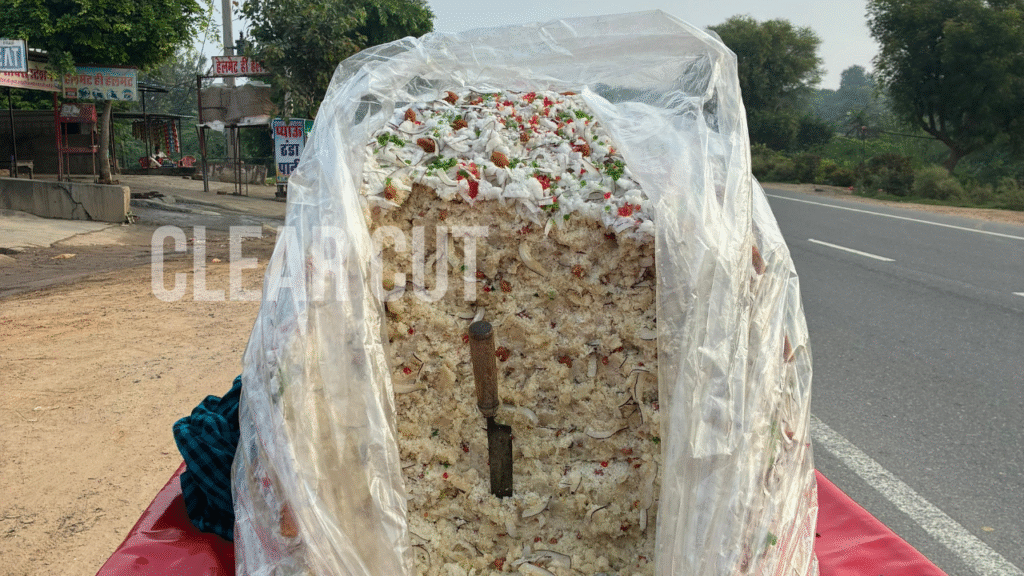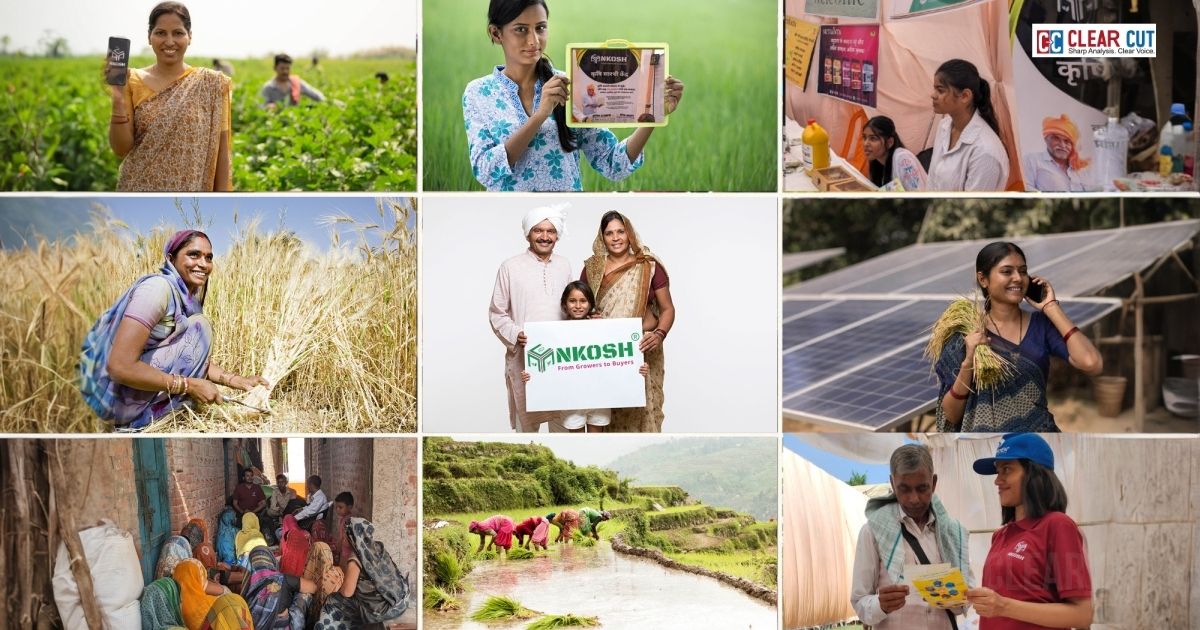Photo Credit: Paresh Kumar
Clear Cut Livelihood Desk
New Delhi, UPDATED: Aug 18, 2025 11:38 IST
Written By: Paresh Kumar
When the streets of Alwar are still bathed in dawn, Manoj Singh, a lone vendor from Jallapur village in Shahjahanpur district, is already on his feet. By 6 a.m., he hauls 50 kg of panchmewa, mixtures of kopra powder (dry coconut), suji (Semolina), Sugar, chuhara (Dry Date), kishmish (Raisin), and peanuts, on his cart, traversing city lanes until 8 p.m. He sells the entire load in two to three days, earning a margin of ₹50–60 per kg, which is about ₹3,000 in three days, or roughly ₹1,000 daily.
What adds another layer to his story is that his family lives nearly 400 kms away from Alwar in Shahjahanpur, where his wife and children tend to their small patch of agricultural land and livestock. His children go to school, and also shoulder household responsibilities. Once a month, Manoj makes the long journey home, briefly returning to the rhythms of village life before heading back to Alwar.

Manoj’s story reflects a wider truth about India’s rural economy. Nearly 89.4% of agricultural households operate on less than 2 hectares of land, according to the NSSO’s 77th round survey (PIB, 2023). These small and marginal farmers rarely sustain themselves from farming alone, prompting many men like Manoj to migrate temporarily to cities or towns in search of supplemental incomes.
Street vendors form another vital but precarious thread of India’s informal economy. According to the Ministry of Housing and Urban Affairs, 4.95 million vendors are registered under the PM SVANidhi scheme, yet most continue to face insecure earnings, licensing hurdles, and lack of social safety nets (MoHUA, Lok Sabha 2023).
Manoj’s cart of panchmewa is more than a livelihood. It is a lifeline stretched between two worlds: his village family and his urban toil. His quiet resilience exposes the fragility of millions of micro-entrepreneurs who straddle rural and urban lives, surviving on the thin margins of India’s growth story.
If Viksit Bharat is to be meaningful, it must account for Manoj and others like him ensuring access to affordable credit, social security, and recognition of their dual identity as both farmer and vendor. For in the long walk between Alwar and Shahjahanpur lies the true test of India’s inclusive development.




